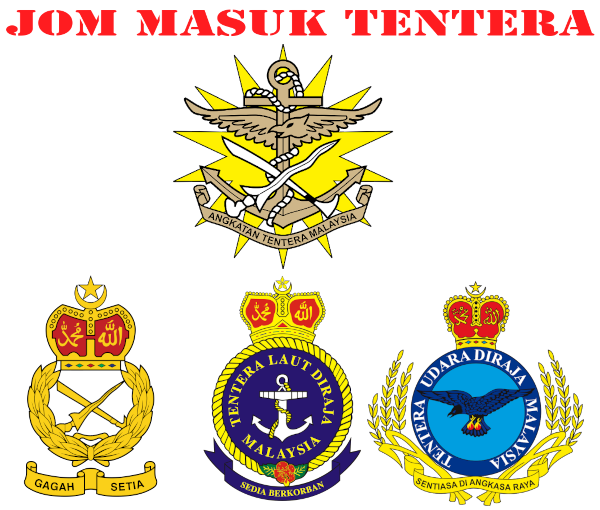
After the wedding ceremony.
Source: News Straits Times
By Raymond Goh – December 31, 2023 @ 1:21pm
IN the crisp September air of 1973, after presiding over the Sultan of Perak’s birthday parade at the Malay College grounds in Kuala Kangsar, life took an unexpected turn. An army signal (telegram) from the Defence Ministry (Mindef) arrived in my Taiping office, bearing news that would alter the course of my life — an invitation to enrol in a 15-month course of postgraduate defence technology in England the following month. Little did I know that this journey would unfold into a love story woven across continents.
The announcement stirred a whirlwind of emotions. Despite the feeling of pride at having been selected, I couldn’t stop the tinge of sadness that crept in. I had found the love of my life, my own Cinderella, and we had plans to marry by the year end.

Royal Air Force jetliner — VC10 (picture courtesy of RAF).
The departure date to London loomed large — Sept 27, 1973. It was a Hobson’s choice, a dilemma borne out of my King’s commission received in 1963. Would my beloved Cinderella remain faithful during my one-year absence, separated by a daunting 10,000 kilometres?
Swift decisions were necessary. I hatched a plan to get engaged and register the marriage before my departure. The quartermaster of 2 Engineer Squadron, Lieutenant Abu Bakar, agreed to be my witness.
However, time constraints foiled the registration as I rushed to Mindef in Kuala Lumpur to complete the necessary documentation and collect the air tickets from the Qantas Office in Jalan Ampang.
The fear that someone might sweep her off her feet in my absence weighed heavily on my mind. Yet, it also became a test of her faithfulness.
Before catching the train to Kuala Lumpur, I seized a moment at the Taiping Lake Gardens to propose. Serenading her with the familiar strains of Green Island Serenade, a melody from a Sandakan concert during my Sabah tour, I wanted to fortify our bond before the impending separation.
On the night of Sept 27, 1973, my family bade me farewell at Subang International Airport. Little did I know that this departure would mark the beginning of an extraordinary journey — both professionally and personally.
THE JOURNEY BEGINS

Exchanging vows at Taiping Gospel Hall.
Arriving at Heathrow Airport at 8am on Oct 27, 1973, after a 17-hour flight (including a transit in Dubai, the United Arab Emirates) I was welcomed by Major Hashim Belanda, the Malaysian assistant defence adviser who assisted with logistics.
Two days at a hotel in East London ensued for necessary documentation at the Malaysian High Commission. A two-hour train journey took me to Swindon, approximately 120km west of London.
The administration officer (a retired warrant officer called RO2) received me at the train station and drove me to the Royal Military College of Science (RMCS) at Shrivenham, a suburb 12km north of Swindon towards Oxford.
I was taken to Kitchener Hall Officers Mess (one of two four-storey blocks of 200 rooms) and booked into my room. My army batman was one Ms Forty, who looked after my domestic affairs as per army protocol. For example, she brought me hot English tea at 5.30am daily, made my bed, cleaned my room and looked after my uniforms.
The course started with 42 officers with the rank of majors and captains from the British and Commonwealth armies. However, a Pakistani major and I were the only two university graduate engineers.

Captured for posterity at the army engineers’ photo studio.
The initial syllabus for the first term was actually Advanced Level academic studies, which were chicken feed to both of us. The course syllabus consisted of conventional warfare technologies, including research & development (R&D), weapons systems, missiles, aerial combat vehicles, battle tanks, artillery guns, ordnance and signal communications.
The staff at RMCS comprised a diverse mix of army, navy, air force and civilian professors and lecturers. I happened to meet up with a former lecturer from Federation Military College (FMC) in Port Dickson, Mr McMicken, who was my advanced mathematics teacher in Form Six from 1960 to 1961.

Cutting a magnificent five-tier wedding cake during the banquet.
Thank God, he recognised me as an old boy of FMC and we caught up, happy to relive the good ol’ days. During his lectures, both of us were excused, especially on Fridays, when we would disappear to London for the weekend.
Upon receiving the course programme in early October, I noticed a term break of two weeks for Christmas-cum-New Year in 1974. As a bachelor, I stayed in the officers mess while the other officers with families were staying in the married quarters (MQ — red faced-brick, semi-detached double-storey building).
What a great idea to get married and bring my wife over to stay in one of the MQs. So, I applied for two weeks leave for early December and tried to get a four-week break to fly home to get married. A splendid idea if approved, God willing!
A NEW CHAPTER

The King’s officers bearing the Guard of Honour.
Miraculously, my application for leave was approved by the commandant general — a rare nod to personal matters amid military commitments. An “Indulgence Flight” by the Royal Air Force (RAF), which cost £6 or RM34.80 was secured for my journey back to Malaysia. On Dec 3, 1973, I found myself at RAF Brize Norton, in transit to the Far East.
The journey took me to RAF Gan, an atoll in the middle of the Indian Ocean, before landing at RAF Seletar in Singapore. From there, I swiftly moved to Changi Airport, catching a Malaysian Airlines flight to Kuala Lumpur. The night mail train to Taiping followed, and on Dec 5, 1973, I reunited with my family.

Guard of Honour by the King’s officers.
Back in Taiping, my father had made all the necessary arrangements for the wedding banquet and liaised with my future in-laws. An engagement ceremony unfolded, witnessed by both families, setting the stage for a grand wedding on Dec 15, 1973.
On the morning of the big day, Dec 15, 1973, I stood at the front of the church hall, waiting in anticipation. A white Mercedes 250 arrived, carrying the father of the bride, S.N. Chin, and his only beloved daughter. The ceremony unfolded, attended by about 200 people, including my former army engineer boss, Lt-Col K.K. Khong.
A guard-of-honour, formed by eight officers, saluted us under the azure sky. The love-fuelled odyssey had officially begun. We departed for a honeymoon to Pengerang, near Desaru in Johor, which was generously hosted by my younger brother, a mining engineer in a bauxite company.

The couple honeymooning at Pengerang.
We stayed in his hilltop company bungalow, which overlooked a pristine beach about 30 feet down below, just like in Hawaii. A week later, we returned to Kuala Lumpur to prepare for our flight back to London.
The army, recognising the unique circumstances, granted my newlywed wife a return air ticket by Qantas. On Dec 28, 1973, we left Kuala Lumpur, arriving in London on Dec 29. A couple of nights at the same hotel in East London preceded our journey back to RMCS. We took the train to Swindon in the evening, followed by a taxi.
OF DUTY AND LOVE

The couple honeymooning at Pengerang.
Before departing the college in early December 1973, I had taken over the keys to one of the MQs located within the RMCS complex. Our new home awaited us, and my wife and I spent the whole of 1974 exploring England and Scotland during college term breaks in the months of April and August.
England’s capital, London, so bustling and alive, became our favourite weekend retreat, offering nights of bed and breakfast for a mere £2.5. Certainly, we created many wonderful memories there.
On Dec 20, 1974, it was time to close a chapter as we bade farewell to RMCS. A few days in London for final shopping preceded our journey back to Malaysia. The tapestry of this unique chapter had been woven with threads of duty, love and unexpected journeys.
Reflecting back on my experience, I remain grateful to the army for my memorable journey — a journey that saw me flying home to get married and embarking on a honeymoon in England.

Lt. Col Ir. Raymond Goh Boon Pah and wife.
From a youthful dream at the FMC in 1961 to the unforeseen privileges of an overseas course and an English honeymoon, my life had unfolded in ways I couldn’t have imagined.
As my beautiful wife and I celebrated our golden jubilee this month (Dec 15, to be precise), the memories of this remarkable journey continue to sparkle in our minds. A love story that defied distance, duty and the passage of time; the tale of a soldier who dared to follow his heart.
This article is written by Ingenieur Lieutenant-Colonel Raymond Goh Boon Pah KMN (Royal Engineers Veteran).









Raymond.
Delighted to find your article on Confrontation and this sequel. I remember you! I was based at Serian as IO first to 1/10th Gurhka Rifles under Lt-Col Ronny McAlister and then IO to my own regiment “The Queen’s Own Buffs”. Please email me!
All the best:
Richard
Col (Ret’d) R.D.B. Talbot C.D., P.J.M.
Former Honorary Colonel & Commanding Officer
The Canadian Scottish Regiment (Princess Mary’s)
Invicta Cottage, 2430 Whidbey Lane
Sidney, Victoria, British Columbia
CANADA, V8L 2K3
Home: 778-426-4355
Cell: 250-580-4401
Email: talbot@talbotconsultants.com